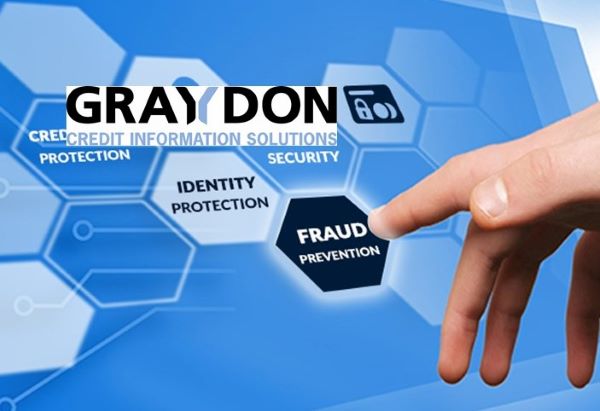An Opinion: Craig Evans (Graydon UK): ‘Preventing fraud is a game of cat and mouse’
Annually, thousands of businesses fall victim to fraudulent customers. Footlocker, for example, recently got swindled for 1.8 million Euros by a fake company called Ups Consultancy. This case also involved ING being fined on grounds of negligence in its due diligence of fraud and was widely reported on in the media. So, fraud not only leads to financial damage but can seriously harm reputations as well. In some cases, the damage could have been prevented by simple measures such as stringent checks.
Every day, fraudsters are becoming more cunning and the methods constantly change shape. In 2018, business information specialist Graydon identified £500,000 worth of suspected frauds across the UK with CCJs amounting to an average of £7,000 loss every week. According to Graydon’s Fraud expert Craig Evans, preventing fraud is a game of cat-and-mouse. “The fraudster comes up with a money making or product claiming scheme and constantly tries to outsmart you in its execution. They constantly switch to different tricks, so it is key to figure out every one of those tricks as quickly as possible. By investigating data trends, we are discovering new types of fraud more and more quickly and we manage to get a step ahead of the fraudsters.”
In this article, he shares three focussed areas for recognising fraud more quickly based on data trends and thus three ways to improve your ‘cat and mouse game’.
 View the business in the context of industry sectors
View the business in the context of industry sectors
Especially where an organisation conducts business with many external parties, a quick check via Google Street View and LinkedIn simply does not suffice. To get ahead of fraudsters, businesses should instead be establishing a reliable benchmark to compare with other businesses in the sector. Once fraudsters see that their trick is working, they will try to pull the same trick on similar businesses. That is why fraud trends within an industry sector can point towards new forms of fraud, allowing your business to become aware of them faster.
Craig Evans: “But that isn’t a matter of setting it up once and putting your feet up as you enjoy the fruits of your labour. With our Onboarding & Detect solution, we continuously analyse and discover new trends in data that could indicate fraud. For example: fraud is a huge issue among car leasing companies. Fraudsters manage to make off with hundreds of vehicles each year. Looking at several fraud cases, we discovered that many of the fraudsters were registered as residents of holiday resorts. That has now been added to our solution as an ‘exception’, a remarkable detail. As soon as an application is made by a company at a holiday resort address, leasing companies that subscribe to our services receive a notification and explanation. The leasing company can then undertake further research of its own. These are things you wouldn’t know if you don’t benchmark within your sector.”
Keep an eye on the media
Another way to stay alert for fraud trends is by closely following the media. Fraud cases that are reported on in the media are a starting point for further investigations for Craig Evans and his team. A common trend identified in the UK media has been the ability of fraudsters to hide behind serviced or virtual offices, and benefit from the lack of red tape around starting a business:
Prior to 2011, only registered company-formation businesses could access Companies House’s web portal to set-up companies on-line and therefore all registered companies could be traced to a verifiable existing person.
“Fraudsters tend to be creatures of habit, where they’ve been successful before they will almost certainly use the same approach again. Historically, Graydon have monitored a number of formation agents (in particular their registered addresses), known to have been used by fraudsters, for suspect activity.”
In 2011, the secretary of state for business, reformed the law, enabling anyone with an internet connection, anywhere in the world, to create a UK company.
Whilst the concept of making the UK one of the easiest places to do business, and give entrepreneurs a chance to flourish, should be applauded. The reality of removing any checks to identify the person setting up a company, just made the fraudsters job, much, much easier.
The recent white paper on the reforms of Companies House is much welcomed in order to help tighten up the UK’s stance on verification of principles of a business prior to the formation of a company”
Draft a clear fraud profile
Risk factors vary from one industry sector to another, from one business to another. For instance, car leasing companies will be reluctant to deal with a customer whose head office is registered at a holiday resort address, while a supplier of garden furniture will find itself commonly dealing with a business with a similar address.
According to Evans, this is exactly why it is so important for businesses to determine their own risk profile and screen new customers and every order that stands out accordingly.
“As said, fraudsters are becoming more cunning by the day. Someone registers a private company, places two small orders and pays for them as expected. Nothing to worry about, it seems. And so, that business passes the screening. Then the third order comes in, a significantly larger one, but when the bill comes due, suddenly they’ve disappeared. That is why a business needs to properly investigate every new customer. What remarkable details or trends can we be uncovered? But equally important is a process to limit the risks involved with larger orders.”
Craig Evans says it all starts with drafting a proper profile. “What characteristics do we look for to determine whether we need to look closer at a potential customer or order? It’s not something you can do solely based on your own data or public sources. Especially when a business grows, this requires smart data solutions that would allow you to monitor transactions and that instantly provide you with a complete picture of the business or contact person. Think, for example, of checks into managerial changeovers, high staff turnover, conspicuous fluctuations in order placement, blacklists, sanction lists, private company structures, affiliated bankrupt businesses, or characteristics that constitute an elevated risk level within your specific sector, etc.”
On top of this, the risk process must be up-to-scratch, without losing focus on commerce. “It is a bit like a decision tree. If this, then that. Which steps do we take when conspicuous details emerge? And how do we prevent focusing too much on limiting the risks and thereby restricting the healthy flow of business? Risk limitation is a matter of finding the right balance between revenue and risk.”
About Graydon
With more than 130 years of experience, Graydon is a leading provider of business information, analytics and insights. Graydon helps its customers to make fast,  accurate decisions, enabling them to minimise risk, identify fraud as well as optimise opportunities with their commercial relationships. To do so, Graydon uses more than 130 international databases and the information of more than 90 million companies. Graydon has offices in London, Cardiff, Amsterdam and Antwerp. Since 2016 Graydon has been part of Atradius, one of the world’s largest credit insurance companies.
accurate decisions, enabling them to minimise risk, identify fraud as well as optimise opportunities with their commercial relationships. To do so, Graydon uses more than 130 international databases and the information of more than 90 million companies. Graydon has offices in London, Cardiff, Amsterdam and Antwerp. Since 2016 Graydon has been part of Atradius, one of the world’s largest credit insurance companies.
Source: Graydon UK


























